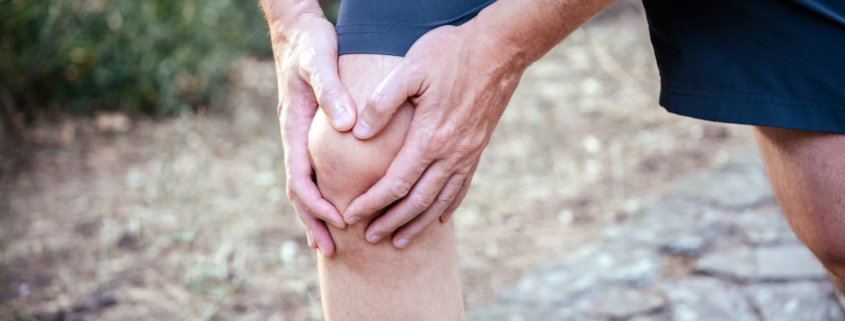What is an Anterior Cruciate Ligament (ACL) tear?
/in Article /by Alta HealthACL tear causes and treatments
The Anterior Cruciate Ligament (ACL) is one of the four major ligaments that contribute to the stabilisation of the knee joint. The ACL is located inside the knee joint, and its role is to stop the shin bone from shifting forward past the thigh bone. Its secondary role is to provide rotational stability to the knee joint.
Approximately 76 per cent of ACL injuries result in surgical intervention. ACL injuries are most prominent in female athletes, but are also common in change-of-direction sports such as basketball, football, rugby and tennis.

What is an ACL tear?
An ACL injury can either be classified as contact or non-contact, depending on the circumstances under which the ligament is injured. Contact ACL injuries commonly occur as a result of a tackle or direct contact to the knee, resulting in hyperextension or excessive twisting of the knee. Non-contact ACL injuries can occur due to a rapid change in direction, rapid acceleration or deceleration, or landing awkwardly from a jump or fall.
When one of these two main types of injury occurs and the ACL is placed under excessive strain, the result is commonly an ACL sprain, tear or rupture. The severity of an ACL injury is graded on a scale of one to three.
Grade 1
A Grade 1 ACL tear is classified as a stretch or mild sprain to the ligament. The knee will still feel stable, but mild pain and swelling is usually present.
Grade 2
A Grade 2 ACL tear is classified as a partial tear to the ligament. The knee will feel slightly unstable, and pain and swelling will be prevalent at the knee joint. Grade 2 ACL tears are rare and most ACL injury incidents result in complete rupture of the ligament.
Grade 3
A Grade 3 ACL tear is classified as a complete tear or rupture of the ACL. The knee will feel very unstable and symptoms of potentially severe pain and swelling at the knee joint may be prevalent. A Grade 3 tear of the ACL is often accompanied by secondary injuries to the meniscus, articular cartilage or damage to the Medial Collateral Ligament (MCL), Lateral Collateral Ligament (LCL) or Posterior Cruciate Ligament (PCL).
What does an ACL tear feel like?
The symptoms of an ACL tear are dependent on the graded severity of the injury. Symptoms usually include pain and swelling, knee instability, a pop or clicking noise when the injury occurs, knee locking or catching, and pain when bearing weight on the affected limb.
How to test for an ACL tear
An ACL tear is usually diagnosed by a Physiotherapist or Orthopaedic Specialist. The ACL assessment involves placing the patient in a seated or lying position, stabilising the ankle, and pulling on the back of the lower leg.
A positive test is indicated if pain is present and if the ACL does not appear to pull the knee back to its original position. If this assessment is deemed positive, a Magnetic Resonance Imaging (MRI) referral is prescribed to examine the severity of the tear. If the assessment is deemed negative, further investigation may be required.
How to treat an ACL tear
ACL injury treatment is dependent on the severity of the tear. Most ACL tears require surgical intervention to reconstruct the ligament and repair any potential meniscus tears. The initial treatment of an ACL tear involves Resting, Icing, Compressing and Elevating (RICE), as well as bracing or taping to stabilise the knee and taking anti-inflammatory medication.
Consult a Physiotherapist to improve the knee’s range of motion and reduce pain and inflammation. Once pain and swelling has reduced, it is best to consult an Exercise Physiologist (EP). An EP will assess the injury and prescribe an individualised exercise rehabilitation program to re-stabilise the knee joint and improve the strength of the muscles surrounding the knee. They will also provide a rehabilitation plan for an eventual return to sport and work.
How long does an ACL tear take to heal?
The ACL has relatively poor blood flow and therefore cannot heal on its own. Most ACL injuries take approximately 12 months to rehabilitate post-surgery. This rehabilitation timeline is dependent on numerous variables, including age, gender, level of activity, athleticism, and injury severity. Non-surgical rehabilitation of an ACL injury is much rarer and is also dependent on the aforementioned variables.
How can VALD help ACL tear recovery?
VALD’s suite of human measurement technologies includes a range of systems which can assist in diagnosing and rehabilitating ACL tears.
The ForceDecks Dual Force Plate System allows practitioners to gather real-time feedback on relevant metrics, such as single leg and double leg jump height, squat mechanics, and balance and stability assessments.
The NordBord Hamstring Testing System can be used to measure hamstring strength and imbalance in various positions, providing an understanding as to how the muscles surrounding the ACL injury are progressing.
The ForceFrame Strength Testing System is a fully adjustable system which is used to test isometric strength in upper and lower body positions, including the knee and hip muscles, and joints which are vital to an ACL tear recovery.
VALD has also launched a handheld dynamometer and inclinometer named DynaMo capable of performing more than 300 strength and range of motions tests. These tests can be utilised to assess hamstring and quadriceps strength – both of which are important metrics to monitor throughout the rehabilitation process.
To learn more about DynaMo and how dynamometers can be used in the treatment of common conditions like an ACL tear, visit: valdhealth.com/dynamo.

This article was written by Eddie Hess, an Accredited Exercise Physiologist with a Master’s in Clinical Exercise Physiology and a Bachelor in Exercise and Sports Science. Eddie specialises in musculoskeletal rehabilitation of post-surgical clients and has broad clinical experience.


